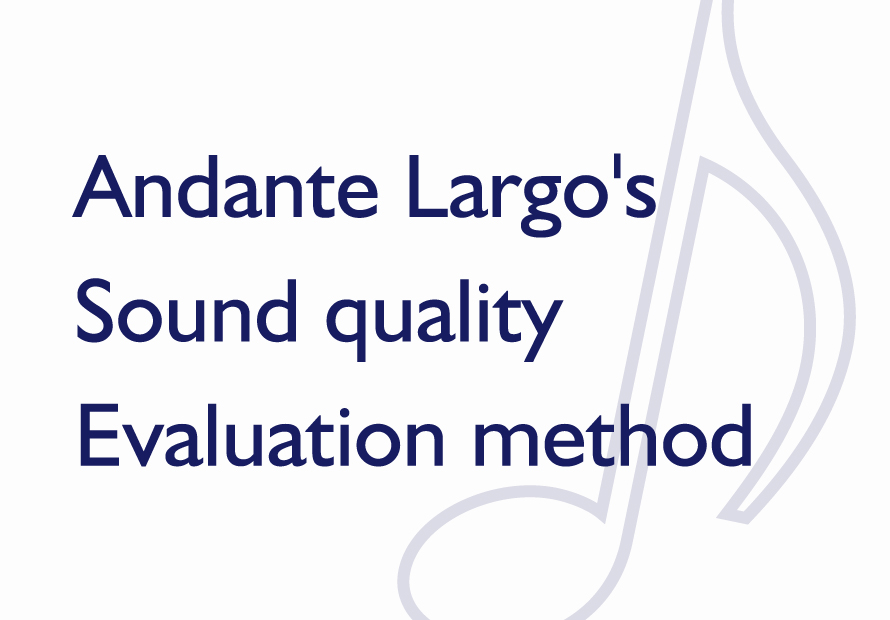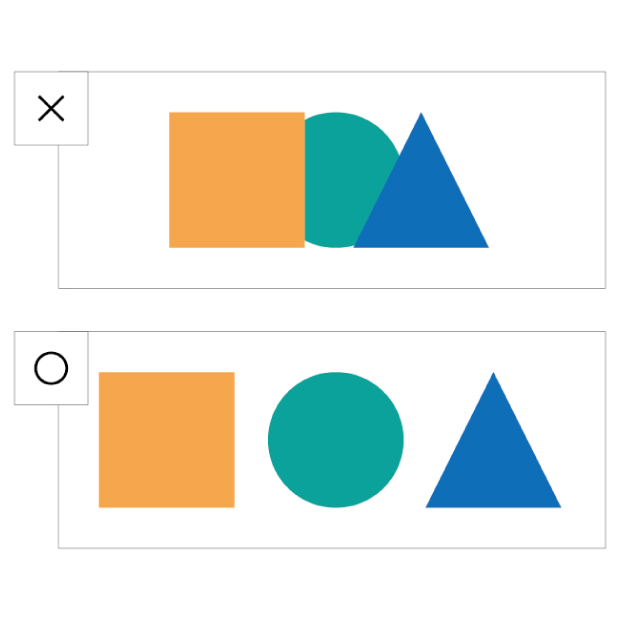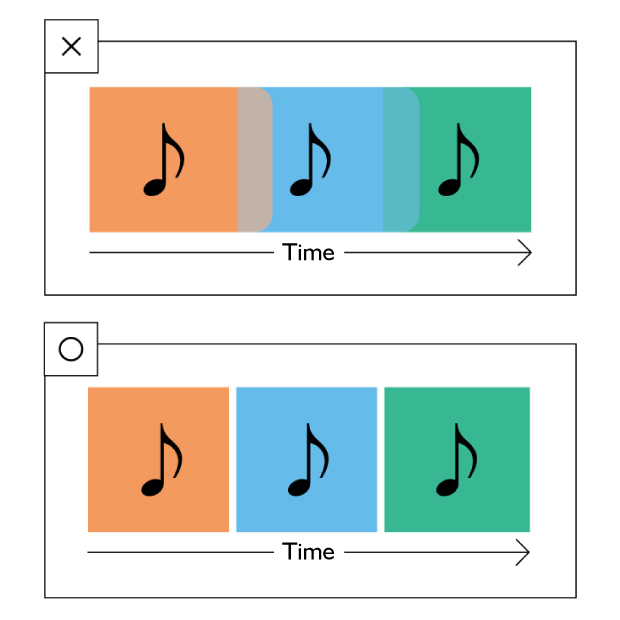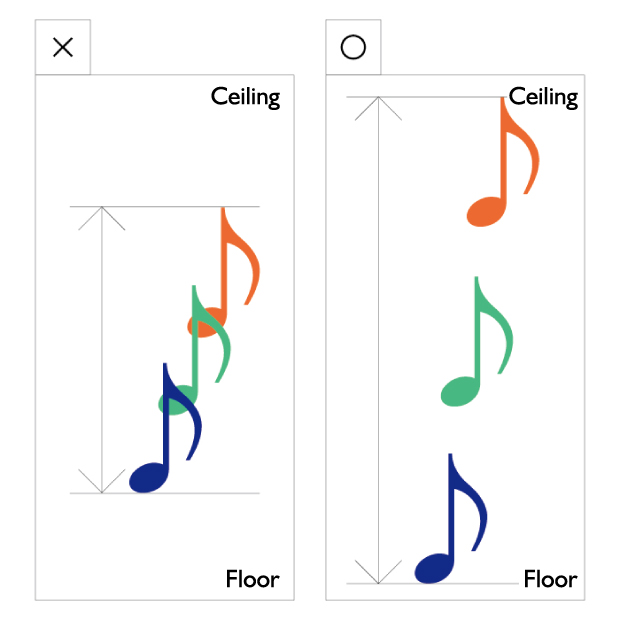Products 製品情報

Andante Largo’s sound quality evaluation method
1. Separation of “Musical instruments”
2. Separation of “One note before and after”
3. Separation of “High notes and low notes”
Why did we create a sound quality evaluation method?
We consistently use three sound quality evaluation scales in the development of our own products, the evaluation of imported products, and system settings.
In order to provide “Good sound” as a manufacturer, we first need to establish clear standards for what constitutes “Good sound.” We believe that by offering a lineup of only products that have been designed and selected based on these standards (rather than vague “Feelings”), you can feel confident in choosing our products.
The following three methods are not exclusive to our company. We hope that you will use it not only when listening to equipment, but also as a reference for setting up and upgrading your own system.
1. Separation of “Musical instruments”
When setting up a system, many people seek clarity in the front/back/left/right position of the instrument and its position. They probably think this is a realistic sound. But in our opinion, that doesn’t really matter.
I think some people will object to this. However, for example, if you play an acoustic guitar in a natural environment and close your eyes, it will be surprisingly difficult to tell where the guitar is being played and where the sound hole is. The same goes for pianos; in a good concert hall, you don’t hear the sound from the piano itself, but rather the sound fills the entire room. You can hear beautiful tones and rich resonances (overtones). In other words, in the original “natural sound”, the position of the instrument is often unclear.
However, once music is played from the system, people often say, “That person is singing here”, or “Instrument A is over there, and instrument B is here.” We believe that it is a condition in which there are not enough overtones. The closer you get to the real sound, the less important “Here” and “There” become. In fact, I believe that this is a “Natural sound” that is closer to the original sound.
Of course, it is not wrong to say that increasing accuracy means that you can point with your finger and know where you are. The problem, however, is that if you pursue just that, you end up with a very unnatural sound.
One of the things we place importance on is the separation between instruments. For example, when you listen to a quartet song on regular audio, you may hear the sounds of each instrument overlap. There are also many cases where the low-volume accompaniment is drowned out by the loud main melody. In terms of paintings, this is a situation in which multiple paintings on a wall appear to overlap each other, which is extremely unnatural. This doesn’t happen often in paintings, but it often happens in audio.

The piano, drums, and bass in a jazz trio should also be clearly audible independently, rather than all as a whole. That’s why they have three different instruments and melodies.
Even in a big band performance, if there is an acoustic guitar among the loud brass, the sound of that guitar should be clearly audible, even if the volume is low. Composers write that little melody in the score because they need that little melody even in the least noticeable parts. Therefore, regardless of the volume, it is important that the sounds of the instruments are reproduced clearly without overlapping each other.
2. Separation of “One note before and after”
Another important separation is that the melody of instruments and voices can be heard clearly and separately from the sounds before and after it. For example, unless it’s a slur, ideally it should sound like “C・D・E”. However, if there is even a small amount of distortion in the sound, it will suddenly become connected to “C~D~E”. We believe that this separation is also extremely important.
In a good classical guitar performance, after playing one note, firmly grip the strings with your fingers to stop the note before playing the next note. It’s not “CDE” but “C・D・E”. Whether the tempo is fast or slow, they play “C・D・E.” This allows each note to resonate very clearly. (Andrés Segovia is a master who has perfected this technique.Whether playing slowly or extremely fast, he plays each note clearly.

Glenn Gould also strictly separates each note in his playing. That’s why each note of their performance sounds clear and beautiful even in extremely fast phrases. )
It’s exactly the same story for audio. For example, let’s say you have speakers that are set up securely so they don’t wobble and are playing great music. Therefore, if you intentionally create a slight wobble between the speaker and the floor, the sound will mix together and the sound will not be beautiful at all.
Playing each note before and after without mixing them… This is an essential point in order to fully receive the performers’ excellent technique and passion.
3. Separation of “High notes and low notes”
Next is the separation of “high and low notes.” When did the terms “high notes ” and “low notes ” begin to be used? Called High note or High frequency in various languages. I’m sure it’s a word that has been used since ancient times, but regardless of language differences, people have probably felt that higher notes are naturally heard from higher up, and have expressed it that way. This is a wonderful feeling that we humans are born with. Therefore, in sounds that are close to natural, high notes are heard from above, and low notes are heard from below, as if crawling on the ground.
Similarly, in a good system, “high notes” will be heard from far above the speaker, and “low notes” will be heard from far below the speaker. Conversely, if there is even a slight amount of distortion in the system, both high and low scales will only be heard from around the speakers.

Also, depending on how you perceive the sound, when the treble and bass are closer to the midrange, it may be considered “good” because it sounds powerful. However, if you apply it to the above story, I don’t think it can be said to be the original musicality.
The song I would like you to listen to for reference is Paganini’s “24 Capriccio No. 5”. There is a beautiful phrase in which the melody of the violin gradually rises from the low strings, then rises higher, then rises again, and I think you can understand the sense of the rise and fall of the scale very well.
High notes resonate from a higher place, and low notes resonate from a lower place…that’s how you can fully enjoy the beauty of “contrast,” one of the most important elements in music.
Focus your ears on the method and you will be able to discern slight differences in sound.
There are many people who say, “I don’t really know much about settings, but I still love good sound and good music.” Even if that’s not the case, hobbies are something you choose based on your own sensibilities, and you probably don’t want others to criticize your choices.
However, when it comes to the manufacturer, you can’t just make a decision based on a vague feeling.
When developing a product, we select the best option from among many options. For example, when comparing five types of materials and choosing the best one, the only way to do so is to listen to the material blindly without any preconceived notions, rather than relying on characteristics that are known in advance. Taking an actual product as an example, when designing the spike mount “Silent Mount”, we created dozens of prototypes with very complex combinations, and selected the best one after listening to it. We also tested more than 30 types of prototypes with regard to the hollowed-out shape of the top plate of the racks, as well as the selection of materials and adhesives. In particular, when it comes to hollowed-out shapes, there are some that have been refined down to the millimeter level.
When I talk about this to third parties, they say, “Do you understand that subtle difference?” In fact, some comparisons appear to show only a small difference numerically. However, if you focus on the three points mentioned above and listen and compare, even the slightest difference will be brought into close focus and you will be able to judge whether it is good or bad.
Please try it once.
Contact
ニュースNews
- 2025.01.23
- お知らせ
- PhonoARAY 試聴レビューが公開されました
- 2025.01.10
- お知らせ
- PrimoBoard 試聴レビューが公開されました
- 2025.01.06
- お知らせ
- あけましておめでとうございます
- 2024.12.27
- お知らせ
- 2024-2025 年末年始休業のお知らせ
- 2024.11.21
- プレスリリース
- 2024年 冬 新製品情報② Chord Company PhonoARAY

